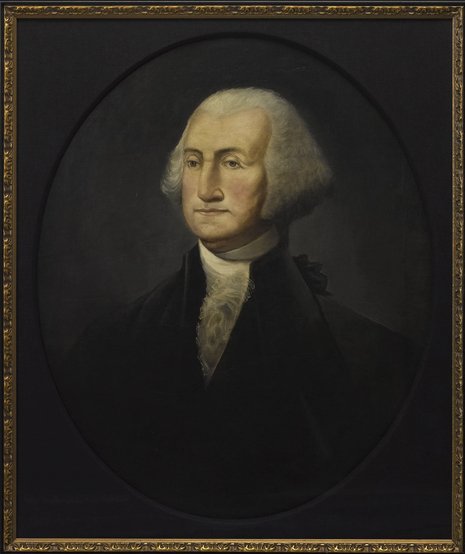Flags of the American Centennial
In 1876, more so than at any other time in history, the comparatively fledgling United States had justifiable cause for confidence in its future. In the 100 years since its founding, the number of states had almost tripled, the population had grown from 4 million to 40 million, and the United States now ranked as a major world power. With parts of the continent still left unsettled, it was clear that the progress of science and industry portended the prospect of taming the great American west. As such, America’s first Centennial was cause for great celebration.
38-Star Printed Square Star Flag, 1876
In the lead up to the nation’s Centennial in 1876, flag makers and individuals looked to the past for designs to produce as part of the country’s celebration. Popular interpretation of the stars and stripes undoubtedly reached its climax of variety and originality at the time of our Nation’s first Centennial. Since no design restrictions were placed on flag makers' imaginations and no strict distinctions were drawn between official and unofficial star counts, it is no surprise that, on the occasion of the Centennial, creativity in flag design was not the exception, but the rule.
The cantons from this period presented an array of geometric abstractions. Great star patterns, referred to as the “starry flower of Liberty” by Oliver Wendell Holmes, that were popular from 1818 and on, resurfaced in Centennial flags. The lively assemblage of many white stars into one great stellar design is perhaps the most beautiful visualization of the goal set forth by the original Flag Resolution of 1777, “...13 stars white in a blue field representing a new constellation.”
38-Star Printed American Flag, 1876-1890
Also popular were wreath or medallion canton patterns that allowed for unlimited enlargement with the addition of new states, without damage to the fundamental design and strong symbolic feeling of a union. Medallion patterns became popular with Americans who wanted some variation from “row” patterns that prevailed on the previous 35 and 36 star flags. Other popular designs included staggered rows, box designs, diagonal patterns, or scattered stars placed whimsically on the canton as a mirror to the nation’s unfettered freedom.
Oddly, the flags of the first Centennial feature three different total numbers of stars on the canton. Some feature 37 stars, valid until July 4, 1777, when Colorado’s star would be added, many feature 38 stars, in honor of the imminent admission of Colorado to the union, while a few feature 39 stars, because for some time it was believed that two territories would be raised to statehood that year.
With so many different star patterns and star counts in circulation, Centennial flags are quite diverse and unique. As there was no regulation on the styling and production of flags up until 1912, flag makers were able to really experiment with how they wanted these celebratory flags to look. While many stuck to the traditional stars on a blue canton, with thirteen stripes, we've also seen flag wavers attached to wooden dowels to be used at events that recited lyrics and prose to honor the Centennial celebration. Some flag makers took it upon themselves to create flags that would stand out from the crowd, which would have been waved among a large mass of other celebratory ephemera.
38-Star American Flag, with Double-Appliqued Stars, 1876
The 38-star flag stood as the official flag variant for an extensive period of time. While 38-star flags were first produced in the Centennial year of 1876, they also continued to be produced all the way up until the new star count was issued in 1890. Thus, the flags with 38-stars grew to be quite diverse from one another as time went on.
The American Centennial was a time of celebration. With the 100th year anniversary since the U.S. became a free country, the nation represented their liberty through the production of American flags. Before the Centennial, flags were not always considered to be the symbol of justice and freedom as they are today. This period in time brought about that sacred connotation associated with the flag. To own a Centennial flag is to own a piece of America history, and we are proud to be a part of that journey for our collectors.
View all 38-star flags HERE.









